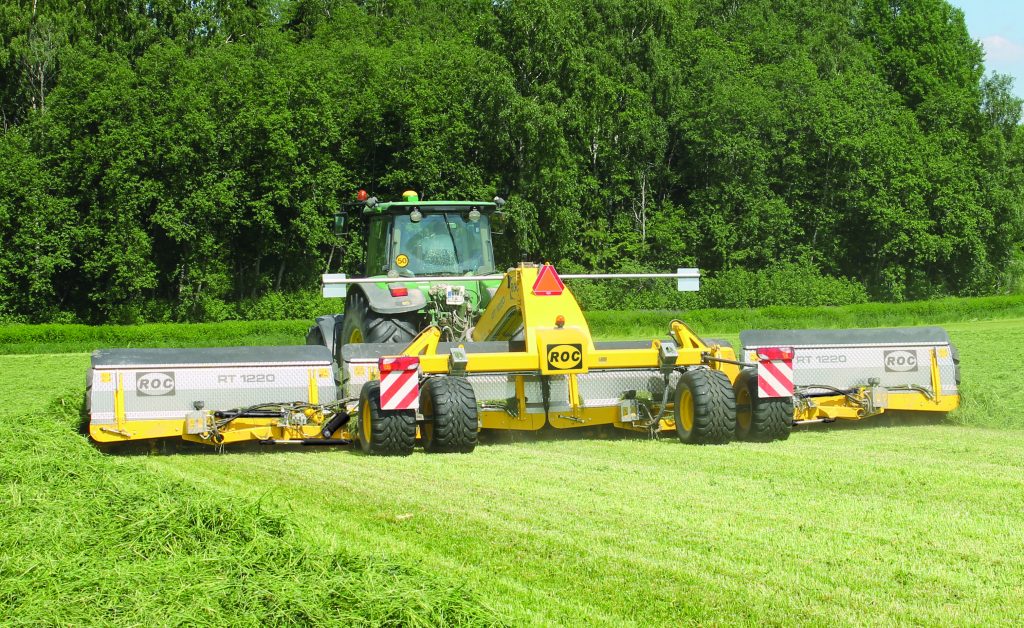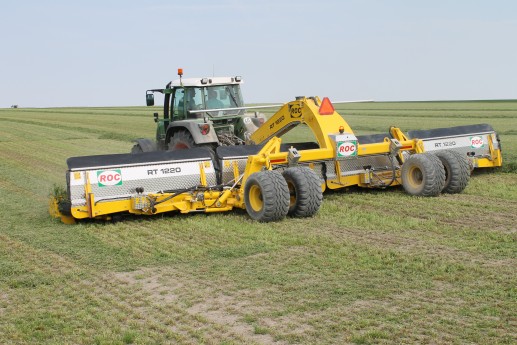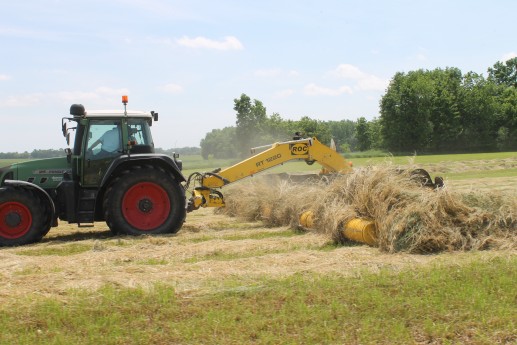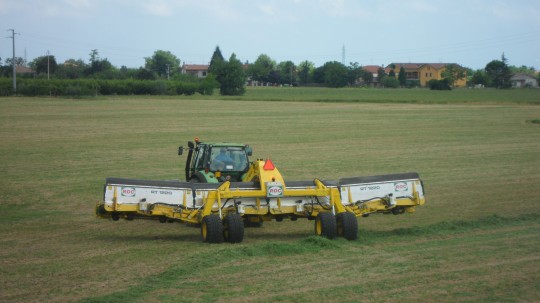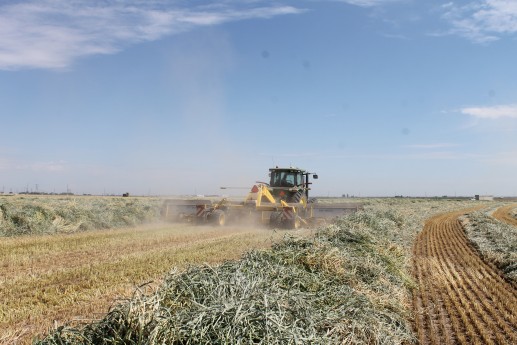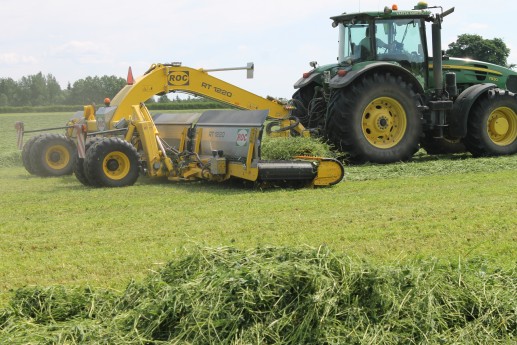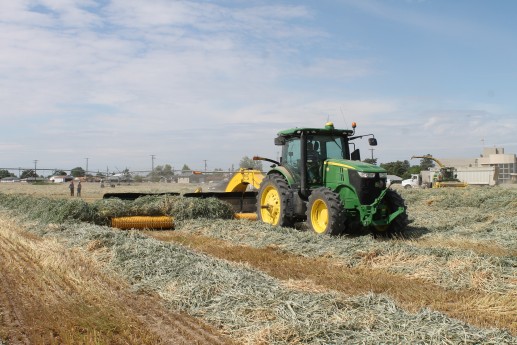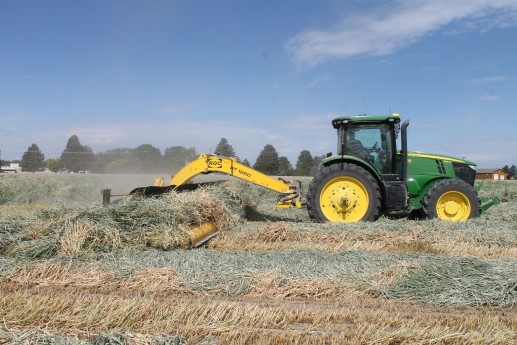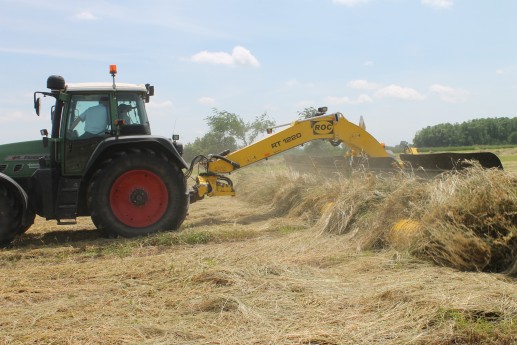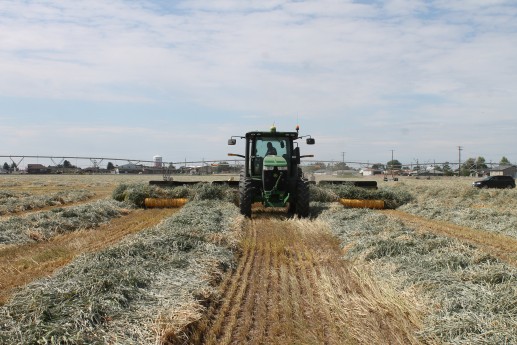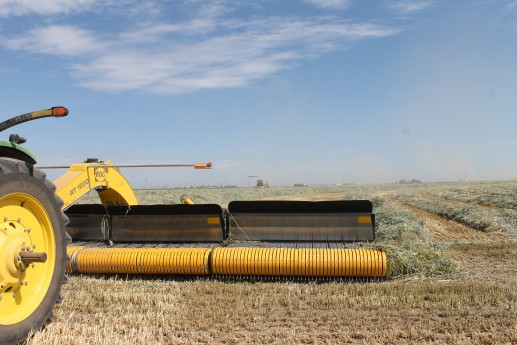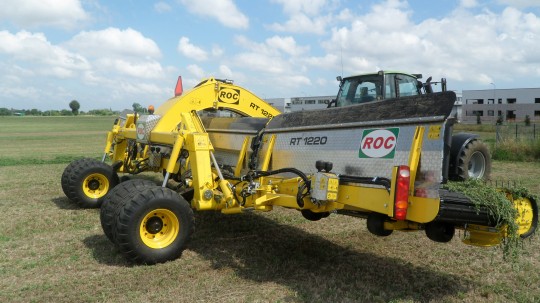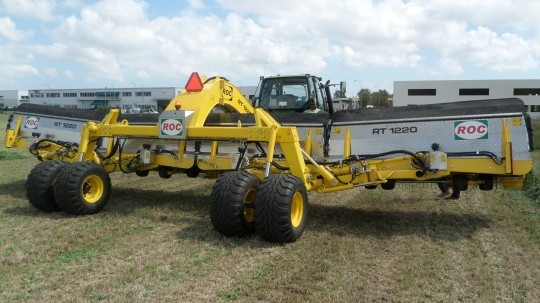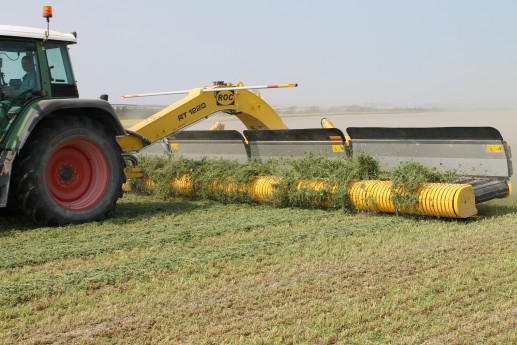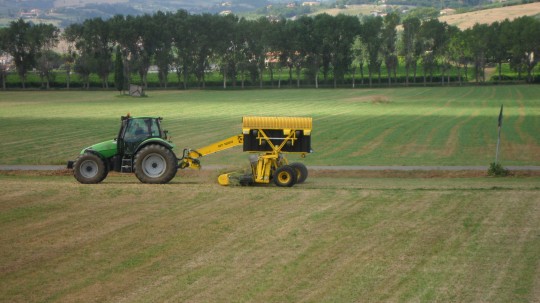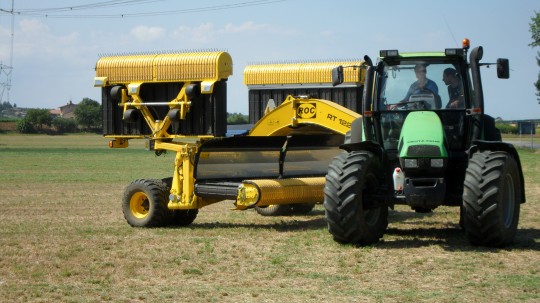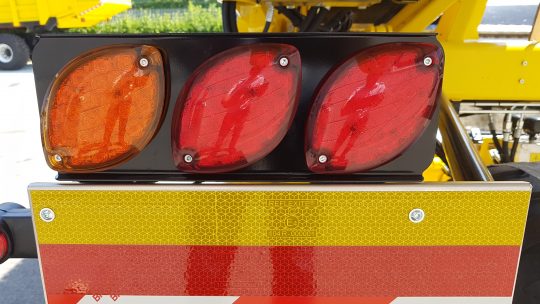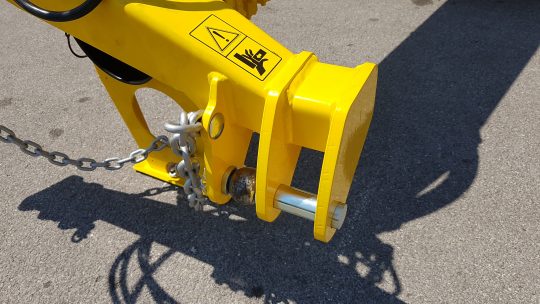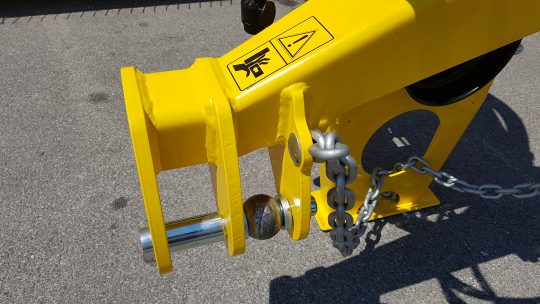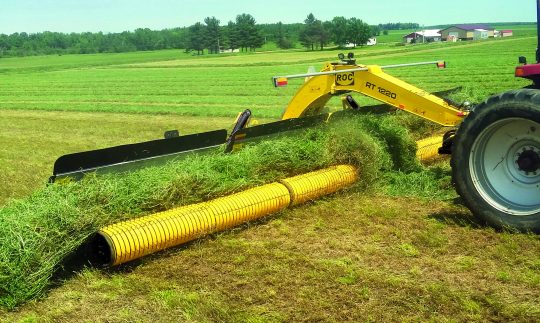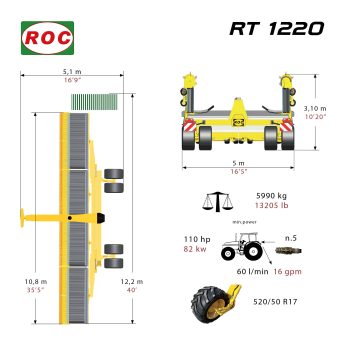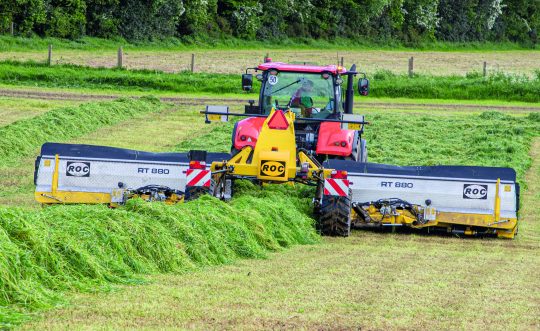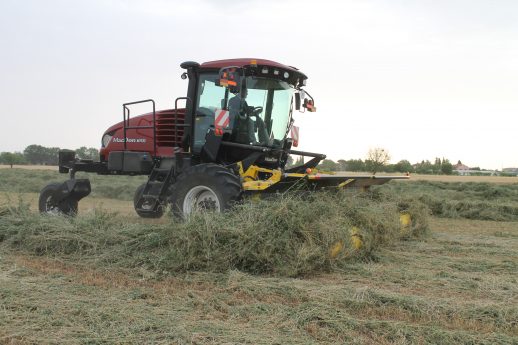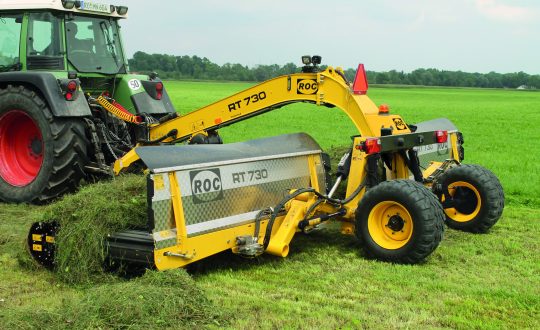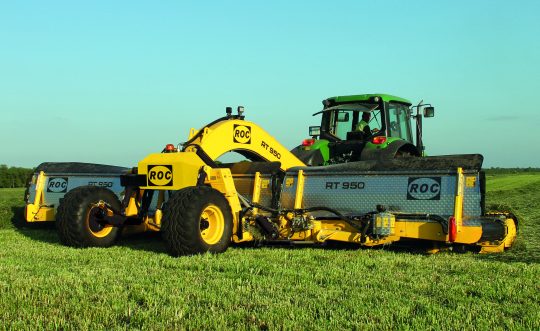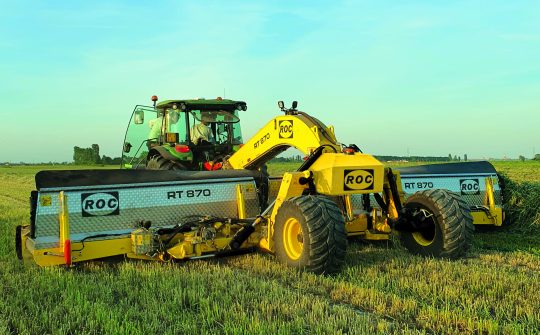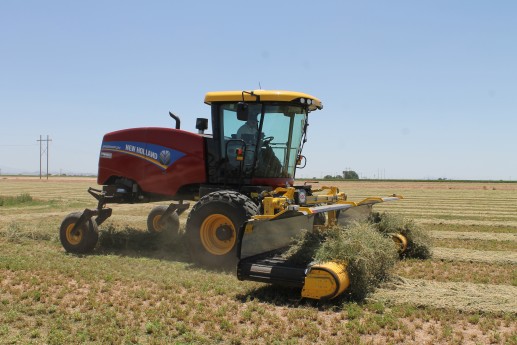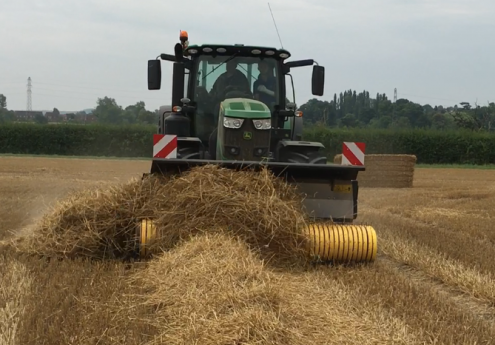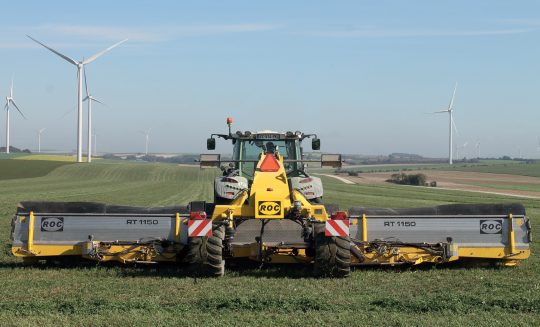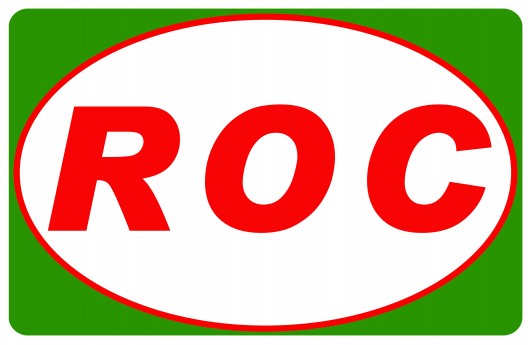RT 1220
Continuous merger ROC RT 1220 is the biggest merger in the world and it represents the symbol of a revolutionary raking system. The main difference compared to traditional rakes is represented by the pick-up system: the ROC RT 1220 lifts the crop in order then to transport it on a conveyor belt, whereas traditional rakes drag the crop on the ground up to the windrow. This difference leads to:
- less stripping of hay and higher quality. Owing to sun drying little alfalfa stalks, which support leaves, become indeed extremely fragile. If you pick-up crop using traditional rotary-rakes and especially in the absence of dew, little stalks are more subject to breaking. This causes the loss of leaves and the consequent loss of important proteins for animal feeding. On the opposite, by using ROC system the crop is lifted and put gently on the belt in order to be transported and deposited centrally without any damage. Moreover, our tests shown that there is a smaller quantity of earth and pebbles inside the windrow, which enables to reach an incomparable product quality;
- lower product losses. In presence of wheel-tracks or holes, during crop dragging traditional rakes tend to leave on the ground a part of product. On the opposite, with our revolutionary continuous merger the crop is lifted on a belt and it is not dragged on the ground as it usually happens with traditional rakes;
- less damages to fresh growth of crop. Under normal conditions, already after 2 or 3 days from harvesting some kinds of crop like alfalfa produce fresh growth made up of small stalks and some leaves. Under these conditions, rotary-rakes tend often to break the small stalks, causing a delay in growth and therefore in harvesting, which means at the end of the season a delay of some weeks in the case of 5 crop cuttings.
In addition to the different pick-up system, it’s important to stress the differences in costs. In fact only one 120 horse power tractor is needed to from a swath every 12 m, which enables to cut considerably the power consumption. It also allows to depress considerably the costs with the latest crop cuttings, whose tonnage per hectare is less than two tons. You don’t have to depend on the machine width, it’s possible to make 2, 3, 4 or 5 pick-up, by picking up the previously swath, without any loss in crop quality, and being able to form one single swath every 50 m. It’s also ideal to form swaths placed on an area where the crop has already been picked-up. For example two of the four belts can be driven into a direction whereas the other two belts into the opposite direction and viceversa.
This means getting the outmost performance from the press during the best cuttings of the year, by reducing the working hours and consequently the consumption of the pick-up machines.
Furthermore, the RT 1220 allows to pick-up fragile crops like alfalfa during day time, to avoid working by night, both costly and not welcomed by the workers, and to save the crop by dew.











